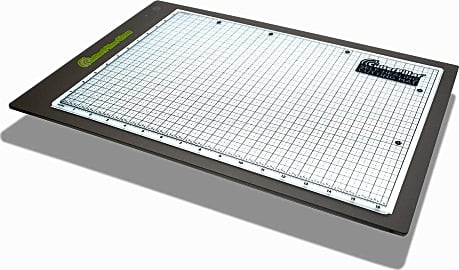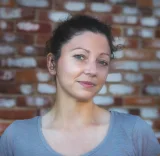The 10 Best Rotary Cutting Mats

This wiki has been updated 39 times since it was first published in December of 2016. Whether you craft for a living or just as a hobby, rotary cutting mats can turn daunting tasks into much easier jobs. They range from no-frills, affordable options to those with self-healing capabilities, extra-thick surfaces, and markings in both imperial and metric measurements. With all of the variations, there's one here that's perfect for your next quilt, scrapbooking, or sewing project. When users buy our independently chosen editorial choices, we may earn commissions to help fund the Wiki.
Editor's Notes
August 20, 2020:
Because we are concerned about the quality of the included rotary cutter, we have opted to remove the Arteza Quilting Kit. Those who are new to quilting and crafting might instead consider the Keayoo Quilting Kit, which has several accessories to get beginners started. These include pins and clips, something the Arteza kit did not have.
Those who are looking only for a mat, not a kit, would still do well to consider an offering from Dahle or Olfa, whether that's the popular Dahle Vantage or the helpful Olfa Rotating. They stand up well to your rotary cutter, are marked for efficient use, and self-heal adequately.
Finally, we selected the June Tailor Quilter’s Cut’n Press II and added one other cutting mat/ironing board combo, the Omnigrid Fold-Away, which is slightly bulkier than the former. Whether you're short on space or travel to classes, these options make it easy to get down to work when you don't have tons of extra room. Just be sure to let the Omnigrid model cool completely before you close it so that the heat from the ironing board doesn't warp the cutting mat.
June 05, 2019:
Most people know the name Olfa when it comes to cutting mats, and for good reason: they're popular thanks to sturdiness and usability. That's why we've kept the Olfa Rotating as a top pick. The rotating feature is a nice touch, and the traditional yellow-on-green design makes it a cinch to use. There's also the Dahle Vantage, from another well-known maker of cutting products. For the sizes, these are priced surprisingly well, so there's no need to sacrifice quality for the budget. For another low-cost option, there's also the Crafty World Professional, but its self-healing properties aren't quite as good as pricier choices. You'll want to treat it carefully for this reason. And at the opposite end of the spectrum, we added the CutterPillar Glow Premium. It lights up to make your work that much easier, and it arrives with the charging cord and cutting mat so you can jump right in. Consider this one if you do a lot of tracing, as there's a glass mat that's available for separate purchase.
Special Honors
Rhino Large When they call the Rhino Large, well, large, that's exactly what they mean; this option comes in a range of sizes, all the way up to a huge version that measures 12 feet long and 6 feet wide. Of course, it has an outsized price tag to match, but if you're looking to cover your entire cutting table, it's definitely an option to consider. mybinding.com
Choosing A Rotary Cutting Mat
Fortunately, there are a few points you can consider that will make choosing a rotary cutting mat a little easier.
For quilters, tailors, crafters, and artists, the rotary cutting mat is a great blessing, as these items, when combined with a rotary cutter, allow for hassle-free, accurate cutting. But selecting just the right cutting mat can be something of a chore, because what the mat is used for and what materials it’s used with weigh heavily on which is the best for the job. Fortunately, there are a few points you can consider that will make choosing a rotary cutting mat a little easier.
First, size matters. You need a mat that will be large enough to accommodate the type of cuts you’re going to be making. If you’re a quilter who loves tiny piece work, then this won’t be very big; if you are cutting large blocks, however, you’re going to need more room. Don’t assume that bigger is always better, however. For those who like to craft while traveling or go on quilting retreats, a small and portable version could be a better choice.
Next, think about the line markings on the mat. You’ll probably use a ruler to help you cut, but these lines can take some of the struggle out of lining up your fabric or paper. There are mats with circles and triangles, as well, which help you more accurately cut shapes other than squares.
Then, consider that some mats are self-healing. This simply means it has a coating that helps it close back over the cuts you make (assuming they aren’t too deep). These tend to feel a little squishier than traditional hard mats, and they may provide a little more grip to the items you place on top of them. The other benefit these mats offer is their resistance to becoming scarred with annoying grooves, grooves that can lead to uneven cuts and snagged fabric. Be careful, however, as the thinner self-healing mats cannot be used with every type of blade; a fixed-blade knife, for example, might harm them.
Finally, the color of a mat is not merely an aesthetic choice. Working with brightly colored fabrics on a bright background won’t provide enough contrast, which makes a neutral gray or white mat a good choice. And because the opposite is true, those who prefer neutral fabrics might find that a nice bright green could be perfect. Nowadays, manufacturers are making mats that are two-sided with a different color on each, which lends extra flexibility. Regardless of the color, you’ll want to make sure that the lines printed on the mat contrast well or else you could have a hard time following them.
Extending The Life Of Your Mat
Once you’ve found the perfect rotary cutting mat, you’ll probably want to hang onto it for a while. Although these items seem simple enough to take care of — they’re inert squares of plastic, after all — a little TLC will go a long way toward keeping your mat in tip-top shape.
Make sure it is stored flat, and keep it away from extreme temperatures.
One way you can ensure a healthy mat is to keep it clean. As you cut, especially if you’re cutting a lot of fabric, little pieces of fuzz can collect on the surface of the mat and in any small cuts. A gentle wash in some lukewarm water will prevent fuzzy buildup and keep a self-healing mat nicely hydrated. Just be sure not to use any harsh chemicals or overly linty cloths in the cleaning process.
You should also be conscientious about how you use the rotary cutter. Don’t press down unnecessarily hard; you’re most likely cutting fabric or paper, not sheets of metal. Try to change where you make the cuts, too. Make a small mark in one of the corners so you’ll be able to rotate the mat each time you use it, and avoid cutting on top of the same grid lines over and over again. If you make a lot of tiny cuts often, invest in a second, smaller mat for this repetitive work, which will help your large mat last longer.
When you’re not using the mat, don’t roll it or leave it leaning against anything. Make sure it is stored flat, and keep it away from extreme temperatures. Don’t leave it in the car or near your iron or with direct sunlight shining on it, in other words.
And if you want to avoid blood stains and keep your precious fingers in one piece, consider investing in a cutting glove. You simply pop one of these cut-resistant gloves onto the hand holding the ruler, thereby preventing unfortunate accidents.
Bringing New Life To An Old Mat
At some point, no matter how cautious you are, your rotary cutting mat is going to give up the ghost. It will become snaggy and frustrating, and after you invest in a new one, you’ll find yourself wondering what to do with the exasperating old one. Instead of simply chucking it in the trash, here are a few ideas for extending new life to an old friend.
For those who do a lot of messy projects, an old rotary cutting mat makes a perfect portable crafting surface.
For those who do a lot of messy projects, an old rotary cutting mat makes a perfect portable crafting surface. Because they are designed to handle cutting, they’ll hold up if you drop scissors or drip hot glue on them, and they’ll wipe up easily, unlike newspaper or cardboard.
You could also keep one in the trunk of your car for transporting messy items. If you want to bring a plant home, for instance, it’s better to set it on this impermeable surface that can be wiped clean than on your car’s interior fabric.
An old mat can also become new again as an entirely different object, as long as you have a sharp pair of scissors with which to cut it. Two common upcycled uses are as coasters or as purse bottoms, which are the stiff pieces of material that help give handmade bags shape and stability. A mat could also become a unique book cover for home journal making or a set of templates for the items you cut often.















